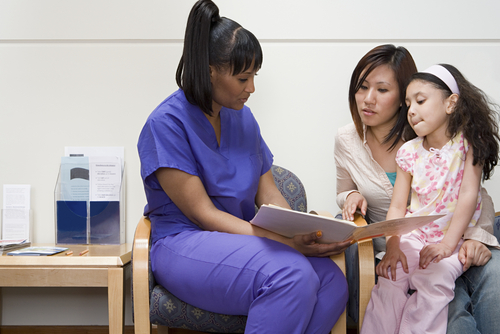In 2008, I was working as a per diem staff nurse in a medical-surgical unit at what was then called New York Downtown Hospital. New Yorkers of a certain age would remember the place as Beekman Hospital. One afternoon, a hospital transporter parked a stretcher with a patient he had just collected from the room and asked a question to no one in particular among the staff members around the nurses’ station: “Does anyone speak Spanish?” No one stirred. He asked again, with a hint of impatience as he signed the log book. With some hesitation, I said, “I know a little Spanish.” The transporter quickly responded, “Great. Can you tell the patient he is going for an amputation of the left leg?” Realizing the limits of my medical Spanish, I demurred and said, “I’m sorry; my Spanish is not sharp enough for amputations.” Without saying a word, the disappointed transporter made for the elevator, taking with him the puzzled and soon-to-be one-legged patient. This exchange fascinated me, partly because of my interest in languages, but mostly because patients with limited English proficiency face the double burdens of social and health disparities, which I feel is a nurse-sensitive issue.
Beyond the three “Rs”
Health literacy is defined as the degree to which individuals have the capacity to obtain, process, and understand basic health information and services needed to make appropriate health decisions. Experts agree that it is beyond simply possessing “reading, ‘riting, and ‘rithmetic” skills to interpret information. Yeh describes it as “a continuum of multidimensional skill sets of competencies acquired over a lifetime that allows an individual to access, participate in, and make informed decisions that directly and indirectly affect health.” In other words, the true measure of health literacy is the application, not the comprehension, of health information.
Patients with low literacy are more likely to revisit the emergency department as compared to patients with adequate health literacy. Additionally, those who are able to understand health information are more likely to adhere to healthy diets, less likely to be underweight or obese, and have better overall mental and physical health. In other words, good health literacy equals better health.
American Babel
Results of the American Community Survey in 2019 revealed that one in five households (roughly 67.8 million people) in America spoke a language other than English at home. This represents an almost 300% increase compared with data from 1980. Also notable is the increase in the number of people who spoke only English, growing from 187.2 million in 1980 to 241 million in 2019. Those in clinical practice may be noticing an increased use of medical interpretation services or relying on English speaking caregivers. Experts caution that even those who have high fundamental literacy skills (with a college degree) may have poor health literacy.
Across all levels of education, it is recognized that English language learners, students who are unable to communicate fluently or learn effectively in English, struggle academically. While proctoring an exam a few years ago, three students called my attention to ask about the meaning of “next of kin,” which was in the stem of a test question. What to some is a relatively common phrase signifying the closest living relative of a person, is out of reach of others’ comprehension. This was easy to fix: I changed “next of kin” to “relatives.” Now, when I create nursing test questions, I make an effort to avoid words that can be confusing (such as “hold the medication”), complicated (for example, “domicile”), or subject to misinterpretation (such as dysphasia [speech impairment] and dysphagia [difficulty swallowing]).
Yeah, but can you say it at a 5th grade level?
The general understanding is that patient education materials should be written at 5th-grade reading level. However, this doesn’t always translate into practice. I once overheard a nurse saying to a patient, “I’m giving you potassium PO because you are having PVCs.” Another example was a physician explaining to a patient before a bedside procedure, “Don’t worry, we’ll put you on conscious sedation.” A dose of jargon often gets the patient anxious. Luckily, there is help out there. Clinicians can access the Centers for Disease Control and Prevention’s Plain Language Materials & Resources to help find everyday words for public health communication. Consider this example: “Screening for cervical, colorectal, and breast cancers also helps find these diseases at an early stage when treatment works best” vs the plain language version “Checking your body for cancer, even if you don’t have symptoms, helps find sicknesses early when treatment often works best.” I would like to see more of this type of linguistic competency cultivated in nursing education. You get good at patient teaching by teaching.
AI-assisted health literacy
Harried providers can use large language models such as ChatGPT and its competitors, Bing and Bard, to generate patient education scripts at a desired reading level in a specific language. Although I consider the potential use of generative AI as a tool, like the side wheels of a trainer bicycle, to help clinicians improve their teaching skills, I fear it could become a perpetual crutch that might lead to cognitive and creative atrophy among its users. AI can augment our vocabulary, but it can’t replace compassion—an essential element in human interaction, disguised as patient teaching. Well-considered patient education is more than just a linguistic destination. It goes beyond the banal texts generated by the internet conveyor belt. It has the potential to become a therapeutic communion in co-creating the healthcare story, joyful or otherwise, for both the patient and the provider.


Reference
Yeh JSJ. Improving evidence-based practices through health literacy. JAMA Intern Med. 2014;174(8):1413.doi:10.1001/jamainternmed.2014.847


















